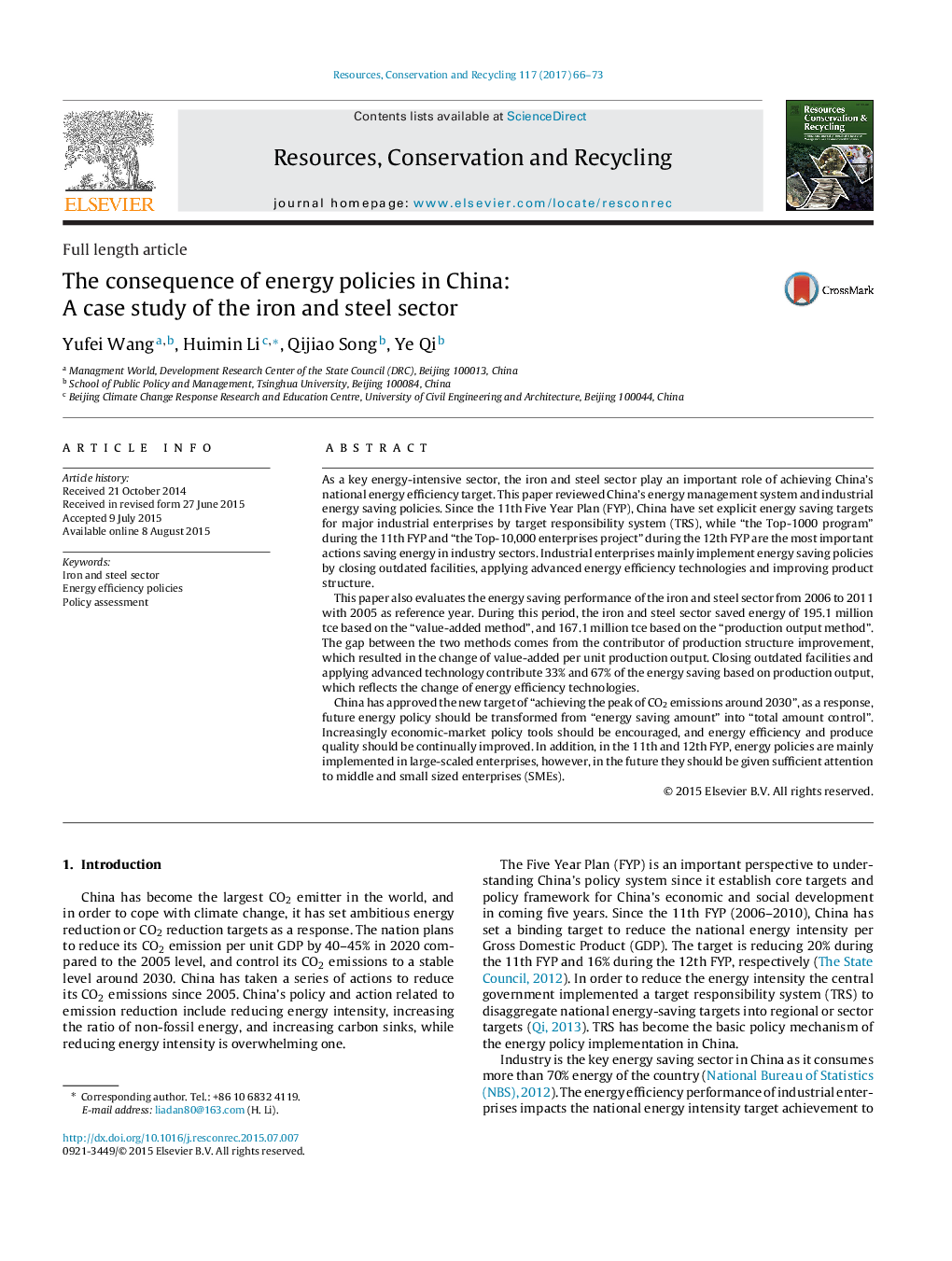| کد مقاله | کد نشریه | سال انتشار | مقاله انگلیسی | نسخه تمام متن |
|---|---|---|---|---|
| 5118745 | 1378178 | 2017 | 8 صفحه PDF | دانلود رایگان |
- Energy policy implementation in iron and steel sector is analyzed.
- Energy saving amount was calculated by two measures to assess their policy performance.
- Policies include closing outdated facilities, applying advanced technology, and improving product quality.
As a key energy-intensive sector, the iron and steel sector play an important role of achieving China's national energy efficiency target. This paper reviewed China's energy management system and industrial energy saving policies. Since the 11th Five Year Plan (FYP), China have set explicit energy saving targets for major industrial enterprises by target responsibility system (TRS), while “the Top-1000 program” during the 11th FYP and “the Top-10,000 enterprises project” during the 12th FYP are the most important actions saving energy in industry sectors. Industrial enterprises mainly implement energy saving policies by closing outdated facilities, applying advanced energy efficiency technologies and improving product structure.This paper also evaluates the energy saving performance of the iron and steel sector from 2006 to 2011 with 2005 as reference year. During this period, the iron and steel sector saved energy of 195.1 million tce based on the “value-added method”, and 167.1 million tce based on the “production output method”. The gap between the two methods comes from the contributor of production structure improvement, which resulted in the change of value-added per unit production output. Closing outdated facilities and applying advanced technology contribute 33% and 67% of the energy saving based on production output, which reflects the change of energy efficiency technologies.China has approved the new target of “achieving the peak of CO2 emissions around 2030”, as a response, future energy policy should be transformed from “energy saving amount” into “total amount control”. Increasingly economic-market policy tools should be encouraged, and energy efficiency and produce quality should be continually improved. In addition, in the 11th and 12th FYP, energy policies are mainly implemented in large-scaled enterprises, however, in the future they should be given sufficient attention to middle and small sized enterprises (SMEs).
Journal: Resources, Conservation and Recycling - Volume 117, Part A, February 2017, Pages 66-73
